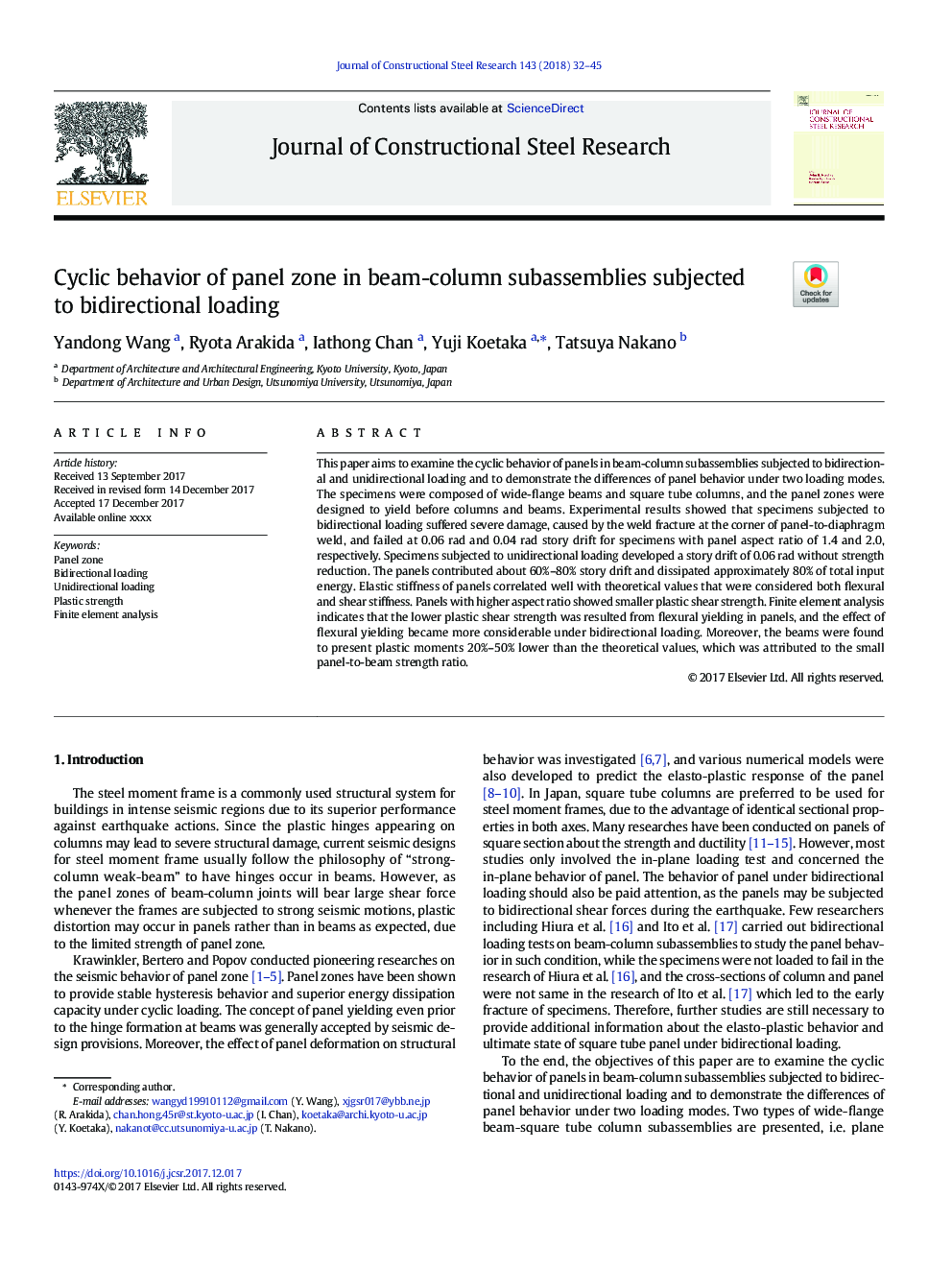| Article ID | Journal | Published Year | Pages | File Type |
|---|---|---|---|---|
| 6750939 | Journal of Constructional Steel Research | 2018 | 14 Pages |
Abstract
This paper aims to examine the cyclic behavior of panels in beam-column subassemblies subjected to bidirectional and unidirectional loading and to demonstrate the differences of panel behavior under two loading modes. The specimens were composed of wide-flange beams and square tube columns, and the panel zones were designed to yield before columns and beams. Experimental results showed that specimens subjected to bidirectional loading suffered severe damage, caused by the weld fracture at the corner of panel-to-diaphragm weld, and failed at 0.06Â rad and 0.04Â rad story drift for specimens with panel aspect ratio of 1.4 and 2.0, respectively. Specimens subjected to unidirectional loading developed a story drift of 0.06Â rad without strength reduction. The panels contributed about 60%-80% story drift and dissipated approximately 80% of total input energy. Elastic stiffness of panels correlated well with theoretical values that were considered both flexural and shear stiffness. Panels with higher aspect ratio showed smaller plastic shear strength. Finite element analysis indicates that the lower plastic shear strength was resulted from flexural yielding in panels, and the effect of flexural yielding became more considerable under bidirectional loading. Moreover, the beams were found to present plastic moments 20%-50% lower than the theoretical values, which was attributed to the small panel-to-beam strength ratio.
Related Topics
Physical Sciences and Engineering
Engineering
Civil and Structural Engineering
Authors
Yandong Wang, Ryota Arakida, Iathong Chan, Yuji Koetaka, Tatsuya Nakano,
